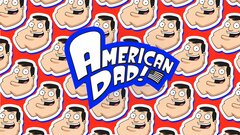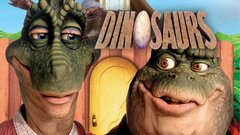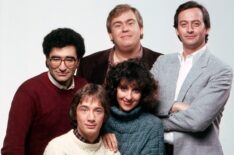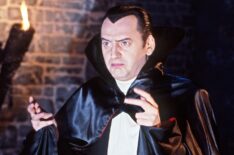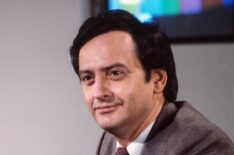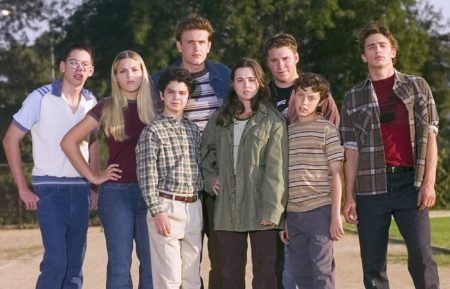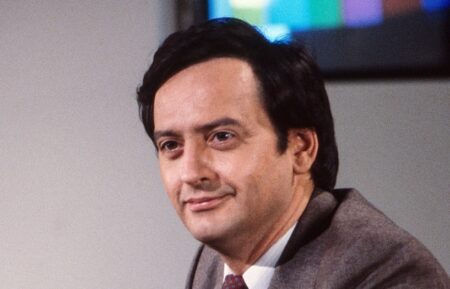As a member of the groundbreaking sketch comedy series "SCTV" (syndicated/NBC/ Cinemax, 1977-1984), improvisational actor Joe Flaherty may not have enjoyed the notoriety of contemporaries like John Belushi and Bill Murray, however the show would serve to inspire and influence an entire generation of future comedy powerhouses, such as Matt Groening and Judd Apatow. Flaherty learned the comedic improv ropes on the famed stages of the Second City theaters in Chicago and Toronto before joining the inaugural cast of "SCTV" in 1977. Along with cast mates that included Martin Short and John Candy, he created such iconic characters as effusive talk show host Sammy Maudlin and the hickish Big Jim McBob from the "Farm Film Report," winning two Emmy Awards for writing in the process.
During and after his tenure on the program, Flaherty appeared in dozens of films and televisions shows, including memorable turns in "Stripes" (1981), "Back to the Future II" (1989), and "Happy Gilmore" (1996). With the character of Harold Weir, the overprotective father from "Freaks and Geeks" (NBC, 1999-2000), the actor once again exhibited his knack for playing characters simultaneously caustic and endearing. More than 25 years after the demise of "SCTV," the work of Flaherty and his crazed cohorts continued to elicit laughs from audiences and shape the comedic instincts of aspiring comedy writers and actors.
Born Joseph O'Flaherty on June 21, 1941 and raised in Pittsburgh, PA, he enrolled in an acting workshop at the renowned Pittsburgh Playhouse while in his teens. From that moment on, Flaherty was hooked, and after a stint in the U.S. Air Force, he returned to the Pittsburgh Playhouse where he enrolled in the venerable institution's drama school. Impressed by some visiting professionals from Chicago's Goodman School of Drama, Flaherty decided to reach out to them once he had graduated from the Playhouse program. Much to his surprise, he was offered a job as a stage manager - despite having no experience - and the aspiring actor jumped at the chance to work with a professional theater company in any capacity.
In 1969, Flaherty's new position entailed working the lights for the stage shows of Chicago's Second City improvisational comedy troupe - a veritable breeding ground for many of the greatest comedic talents throughout the 1970s and 1980s. Within six months, he managed to land a spot in the company's new cast and from there honed his improvisational comedy skills with a newfound enthusiasm. It was during this time that Flaherty clowned alongside the likes of John Belushi, Bill Murray and John Candy over a four-year period. He left the group briefly in 1974, when he traveled to Toronto, Canada to help start a new Second City company, followed by a stint in New York after being lured away by Belushi to work on his National Lampoon stage and radio shows. Flaherty would, however, return to the folds of Second City before long, for what would become the pinnacle of his career.
Many of Flaherty's Chicago Second City cohorts - including Belushi and Dan Aykroyd - had gone on to join the cast of the groundbreaking late night sketch comedy series "Saturday Night Live" (NBC, 1975- ). After a small Canadian TV studio contacted producers from Second City's Toronto branch about doing something similar, Flaherty was invited to participate. The result was "SCTV" (syndicated/NBC/Cinemax, 1977-1984), comprised of Flaherty and fellow Second City vets John Candy, Eugene Levy, Andrea Martin, Catherine O'Hara, Dave Thomas and Harold Ramis.
Somewhat groundbreaking as an early "meta" concept, the premise was that "SCTV" was an actual independent television station which aired a wide array of hilarious, and largely incompetent, programming. With each episode - written entirely by the cast - the audience was also privy to the behind-the-scenes hijinks of the station's conniving executives and egomaniacal second tier stars. For his part, Flaherty embodied some of the most memorable, including the tyrannical wheelchair-bound (when it suited him) station president, Guy Caballero, and the campy host of "Monster Chiller Horror Theater," Count Floyd. Throughout its tumultuous and tenuous run on television, the show launched the successful careers of many of its cast members - most notably the late John Candy - and would go on to greatly influence the creative instincts of dozens of future comedy writers and actors, many still in their teens at the time.
Over the course of the years when "SCTV" was at its creative peak - although still not widely seen - Flaherty also managed to make several big screen appearances, frequently alongside fellow Second City members or "SNL" alum. He played a smarmy emcee in Steven Spielberg's WWII comedy "1941" (1979) - the director's first financial failure - and played an incompetent Soviet border guard in another military comedy, the Bill Murray vehicle "Stripes" (1981). A role in the madcap comedy "Going Berserk" (1983) reteamed him with pals John Candy and Eugene Levy, while his portrayal of the aptly named Sid Sleaze in the children's feature "Sesame Street Presents: Follow That Bird" (1985) introduced Flaherty to a younger audience.
His work with Rick Moranis - another "SCTV" alum who had joined the show in its third season - and Andrea Martin in the Robin Williams island romp "Club Paradise" (1986), along with his addition to the cast of the John Cusack teen-comedy "One Crazy Summer" (1986), proved that the versatile comedic actor had a post-"SCTV" future. He capitalized on the cult following Count Floyd had built when he returned to television as the writer-host-executive producer of the three-part comedy series "Really Weird Tales" (HBO, 1986), a spoof of suspenseful anthology programs.
In a similar vein, when fellow "SCTV" veteran Martin Short - who had joined near the end of season four - landed his own animated series "The Completely Mental Misadventures of Ed Grimley" (NBC, 1988-89) Flaherty provided some live-action performances in which he reprised the Count Floyd character. His manic performance as a summer camp commander in the family dramedy "Looking for Miracles" (Disney Channel, 1989) earned Flaherty a Gemini, the Canadian equivalent of an Emmy.
Busier than ever, he also popped up for scene-stealing moments in John Candy's "Who's Harry Crumb?" (1989) and had a small, but pivotal turn in the Michael J. Fox time-traveling comedy "Back to the Future II" (1989), as a Western Union messenger who delivers a 70-year-old letter to Marty McFly (Fox), thereby triggering a second sequel. The new decade marked Flaherty's successful return to regular series television, when he played wacky inventor Fred Edison on "Maniac Mansion" (Family Channel, 1990-95), and made further contributions to the show as a producer, director and writer. During the last season of "Maniac Mansion," he demonstrated his range with an appearance as a concerned father in the 1950s exploitation remake "Runaway Daughters" (Showtime, 1994), co-starring Julie Bowen and Paul Rudd.
The following year, Flaherty took part in back-to-back dysfunctional family-themed projects. On TV he played a beleaguered dad in "Family Reunion: A Relative Nightmare" (ABC, 1995) and turned up as a grieving cousin in the "SNL" spin-off feature "Stuart Saves His Family" (1995). Other work included a fortuitous appearance on the short-lived Louie Anderson sitcom "The Louie Show" (CBS, 1996), and a brief cameo as an obnoxious golf fan in the Adam Sandler lowbrow comedy "Happy Gilmore" (1996). Flaherty gave it his best effort as a training academy commandant in the ill-advised television treatment of the long-in-the-tooth comedy franchise "Police Academy: The Series" (syndicated, 1997-98). It was, however, another soon cancelled series - this time undeservedly so - that would add yet another fondly remembered character to Flaherty's résumé.
Having worked with him on "The Louie Show," up-and-coming producer-director-writer Paul Feig cast Flaherty as the overbearing but lovable dad, Harold Weir, in "Freaks and Geeks" (NBC, 1999-2000). On the nostalgic and often hilarious coming-of-age series, Flaherty was the perfect "old school" compliment to the show's young cast of future stars that included Seth Rogen and James Franco.
Over the course of the 2001-03 seasons, Flaherty embraced his Irish roots on several episodes of "The King of Queens" (CBS, 1998-2007) as local priest Father McAndrew. He picked up more face time on the big screen in the Martin Lawrence action comedy "National Security" (2003), and lent his voice to the character of Jeb the Goat in Disney's animated feature "Home on the Range" (2004). In a nod to his "Back to the Future II" role, Flaherty provided more voice work on the animated sitcom "The Family Guy" (Fox, 1998- ) in a 2011 episode involving time-travel and an assassination attempt on Leonardo Di Vinci, titled "The Big Bang Theory."





